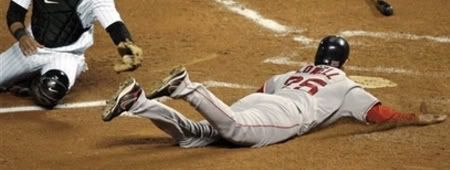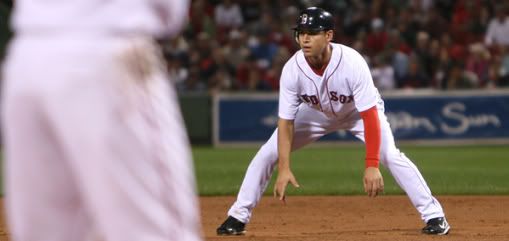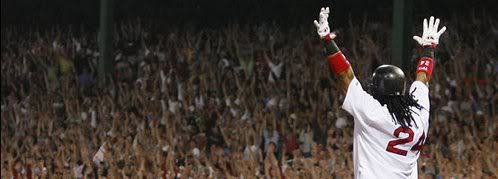PreambleIn the wake of the Mitchell Report, many New York fans and writers have been left with a bitter taste in their mouth. The report named a total of 17 current and former Yankees who used PEDs. And even though former Red Sox fan favorites like Roger Clemens and Mo Vaugn were named, in addition to members of the 2007 championship team like Brendan Donnelly and Eric Gagne, it still wasn't enough.
Mitchell made the critical mistake of not naming enough Red Sox players. Some New York fans have even claimed that the Mitchell Report should be dubbed "the Red Sox Report".
New York Sports writer Bill Madden made Mitchell's bias obvious when he pointed out that "not one prominent recent Red Sox, Milwaukee Brewer or Texas Ranger wound up in that report?"
Now I thought George W. Bush left his job with the Rangers. I remember something about him becoming president, and a Republican at that. But you know what, good of George Mitchell, a Democrat, to be bipartisan and keep Bush's 1994 interests in mind. If Mitchell wasn't so biased in other areas, he'd be a great example for our young politicians.
So for all of you who were unsatisfied with the Mitchell Report, I've undergone my own investigation. Now I know I'm not a respected former politician, and I never helped broker peace in Northern Ireland. In fact, most people have probably never heard of me.
I'll leave the accuracy of the report for you to ponder, although I doubt it will be debated on ESPN. I will do the one thing which will make this report legitimate in the eyes of millions of New York fans; I will name Red Sox.
I will not keep you waiting any longer. Without further ado, I present to you The Michaels Report.
Information Obtained Regarding Players' Possession or Use of Steroids and Human Growth Hormone
Jonathan Papelbon: Papelbon was heartbroken when in 2005, the Red Sox made him pitch at the Triple-A level before being called up. He couldn't understand why he wasn't called up after he posted a 2.48 ERA and a 0.94 WHIP at the Double-A level. He decided it wasn't his numbers, but rather his simply wasn't making enough of an impression.

And so, in 2005, Papelbon turned to fellow Baton Rouge native, and hGH user Andy Pettitte for help. Pettitte testified as the the secondary uses of hGH. He himself didn't use them to cheat, but rather to help out his team. Like Pettitte, Papelbon tried out hGH, but after finding that his illegal drug use didn't make him seem like "more of a team player", he turned to steroids.
Steroids Papelbon found an immediate use for. While he didn't need them to bulk up, they gave him a mental edge. And with the help of roid rage, he was able to make his famous "Papelstare". Red Sox scouts immediately noticed Papelbon's stare of pure rage and promoted him to the major leagues.
David Ortiz: Ortiz was released by the Minnesota Twins after his age 26 season, in which he slugged only .500. Ortiz showed promise in the minor leagues, but the Twins didn't feel they could afford him. So in order to make sure he caught on somewhere else, Ortiz invested his fortune of an arbitration contract into thousands of dollars worth of hGH and steroids.

We know Ortiz has used PEDs for a variety of reasons. First of all, he puts up good power numbers and plays for the Red Sox. Second of all, not only does he get walk-off hits, but he does so against Mariano Rivera. Mariano Rivera is the greatest closer of all time. In fact, he's so good that the only people capable of getting walk-off hits against him are Bill Mueller and cheaters.
Issues arose when certain "shrinking" side effects of steroids began to take their toll on the body and ego of Ortiz. In order to battle the damaging mental affects, Ortiz undertook the nickname "Big Papi" The nickname helps compensate for parts of Ortiz which are no longer that big.
Ortiz has previously said the only things he puts in his body to be big are "rice and beans". In the Dominican Republic those are known slang terms for hGH and steroids.
Hideki Okajima: Okajima experienced severe stress on his neck in Spring Training with the Red Sox in 2007. Trainers were worried that if Okajima continued his violent head jerks, his head was in danger of falling right off. So in order prevent that from happening, he began using hGH to strengthen his neck muscles. While hGH use without a prescription is illegal, Okajima swears that his illegal drug use is only for his own safety.
In April Okajima actually admitted to his steroids use, saying he was inspired by Bonds' use in the book
Game of Shadows. But his interpreter tried to protect Okajima, mistranslating the statement to say "I'm willing to be a hero in the dark". MLB.com ran a story on the quote entitled
"Okajima emerging out of the shadows".

Dustin Pedroia: Not only is he a good player on the Red Sox, but he has a receding hairline as well, a clear indication of steroids use. Besides, no one who is 5'8'' could be good unless they cheated.
Conclusions
It has become clear that the Red Sox have a significant and prolonged culture of PED use. The Mitchell Report demonstrated that various former Red Sox players used PEDs. When Paxton Crawford dropped a bag on the floor of the Red Sox clubhouse, and needles came out, members of the Red Sox laughed.
This is because the Red Sox are cheaters. It wasn't enough to know that Red Sox have used PEDs, peopled needed to know names of current Red Sox players. It was unfair that more Yankees than Red Sox players were named.
And in conclusion, use of PEDs by Red Sox players helps to explain why they've been better than the Yankees lately. No wonder they've won two World Series in the last four years. An asterisk should be placed next to them, and the Red Sox AL East championship last year. Just like the "real" home run king is Hank Aaron, the real AL East Champions are the New York Yankees.

















